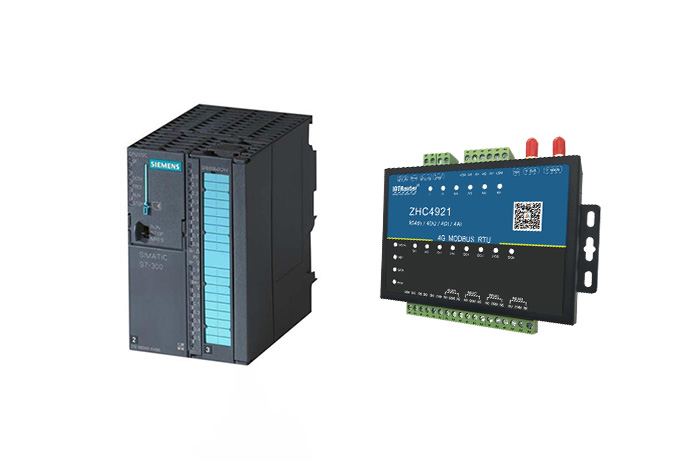RTU (Remote Terminal Unit) is a remote measurement and control unit device responsible for monitoring and controlling on-site signals and industrial equipment. Compared with traditional programmable controllers (PLCs), RTUs usually have excellent communication capabilities and larger storage capacity, are suitable for harsher temperature and humidity environments, and provide more computing functions that comply with proprietary standards. It is precisely because of the perfect functions of RTU that RTU products have been widely used in SCADA systems.
The most basic and extensive application field of PLC (Programmable logic Controller) is to replace traditional relay circuits to realize logic control and sequence control. Although the current PLC’s capabilities in processing analog quantities, digital operations, human-machine interfaces and networks have been greatly improved, its main applications are in traditional industrial control fields, such as metallurgy, textiles, automobiles, electric power, building materials, Machinery manufacturing and other industries.


RTU is the technological development of PLC products. It not only has the traditional functions of PLC, but also has its professional product characteristics. So, what is the difference between RTU and PLC? What are the advantages of RTU?
1. Highly integrated and more compact modular structure design
RTU’s compact and miniaturized product design simplifies system integration and is suitable for installation in unattended stations or outdoor applications. The highly integrated circuit design increases the reliability of the product, while having low power consumption characteristics and simplifying the design of the backup power supply circuit.
2. Provide a variety of communication ports and communication mechanisms
1. RTU products are often pre-integrated with multiple communication ports in the design, including Ethernet and serial port RS232/485. These ports meet different remote and local communication requirements, including establishing communication with the central station, establishing communication with intelligent devices (flow meters, alarm equipment, etc.), as well as local display units and terminal debugging equipment.
The communication protocol adopts standard protocols such as Modbus RTU, Modbus ASCII, Modbus TCP/IP, etc., and has wide compatibility. At the same time, the communication port has programmable features and supports communication customization of non-standard protocols.
2. The communication mechanism of traditional control systems (including PLC) is master-slave mode, which is the communication principle followed in the industrial control field under a proprietary wiring structure. The RTU product has client/server communication capabilities and can initiate active reporting communication methods. Municipal projects often use wireless communication methods (telephone modem, digital radio, GPRS/CDMA, etc.), but these methods cannot effectively guarantee the real-time nature of data communication. Active reporting can effectively improve the real-time and effectiveness of data.
3. Provide large-capacity program and data storage space
From the perspective of product configuration, the program and data storage space provided by PLC is often only 6-13K bytes, while RTU can provide 1-32M large-capacity storage space. An important product feature of RTU is the ability to continuously store/record data in a specific storage space, and these data can be time-tagged. When communication is interrupted, the RTU records data locally, and can retransmit and restore the data after communication is restored. The data logging (Datalogging) function is a project wizard configuration application that does not require programming.
4. Quality more suitable for harsh environment applications
RTU products are designed for harsh environment applications. Usually the product is designed to operate at an ambient temperature of -40~70°C. Some products have DNV (classification society) certification and are suitable for applications in humid environments such as ships and offshore platforms.
The PLC requires an ambient temperature of 0~55°C. It cannot be placed under components that generate large amounts of heat during installation. The surrounding space for ventilation and heat dissipation should be large enough. In order to ensure the insulation performance of PLC, the relative humidity of the air should be less than 85% (no condensation). Otherwise, the failure rate of PLC components will increase or even be damaged.
